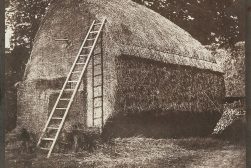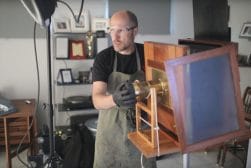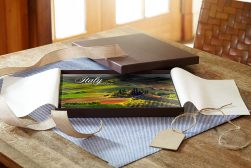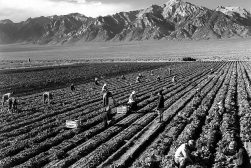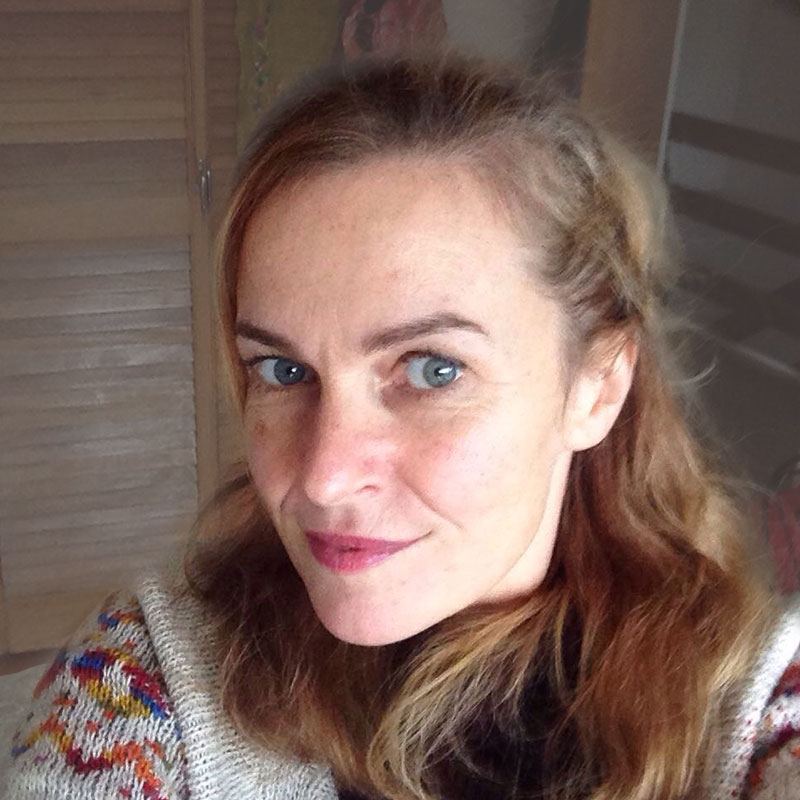
How to Get Started with Pinhole Photography
Taking photos with pinhole camera is an exciting, creative and affordable way to explore the wonderful world of photography. Here's how to get it right.
Learn | By Judyth Satyn
Pinhole Photography strips photography back to its most basic fundamental techniques.
The Pinhole liberates the photographer with a minimalistic approach – the camera is a box, an aperture, and light-sensitive paper.
It is the oldest form of photography and its interesting history includes prominent artists and ancient philosophers.
In this article we cover the history of Pinhole Photography, learn how to make a camera, and discover why photographers prefer to use a pinhole over sophisticated lenses.
What is Pinhole Photography?

Image: Johnny Briggs
Pinhole Photography is the use of a simple camera made with a light-tight box with a tiny hole (the aperture) to shoot photographs.
These are the most rudimental of cameras with no high-tech lens or viewfinder.
They take photography back to the very basics, light, and composition.
The world outside the box is captured via the hole and projected onto the darkened space within.
Instead of a glass lens, a fine hole is pierced into one side of the box, usually made with a pin, hence the name.
The smaller the hole the sharper the image will be.
Light-sensitive material, such as photographic paper or film, is placed on the opposing side of the box to the hole.
Light passes through the aperture (pinhole) and an inverted and flipped replication of the scene outside is imposed onto the photographic paper.
The pinhole works by focusing the light rays and the photography paper captures the rays of light.
Later the paper can be developed and fixed and the finished product will be a photo.
When taking a pinhole image you are released from the usual photographic technical trappings and have the freedom to simply paint with available light.
F-stops, shutter speed, light meters, and viewfinders are not involved in the pinhole technique.
But each pinhole camera’s mechanics will differ from another depending on a few factors.
Such as – pinhole diameter, a curved or straight film plane, image format, and focal length to name a few.
The focal length is related to the diameter of the pinhole, the smaller the hole the sharper the image.
Pinhole has an infinite depth of field, capturing the closest flower to the furthest building.
In its divine simplicity, it captures a magical natural phenomenon, known as the Obscura effect.
How Much Do You REALLY Know About Photography?! 🤔
Test your photography knowledge with this quick quiz!
See how much you really know about photography...

The History of Pinhole Photography
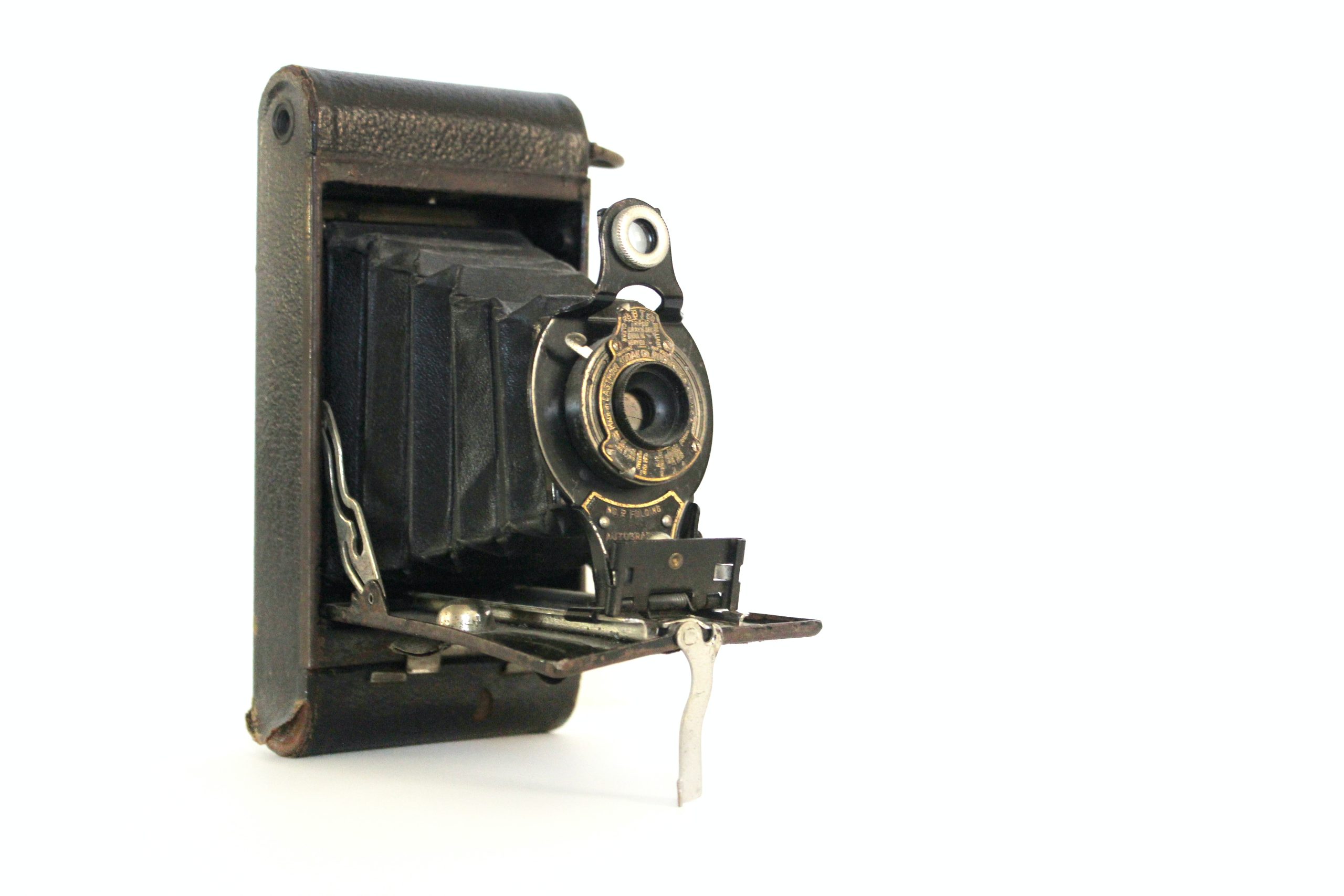
Image: Jen Theodore
The history of Pinhole Photography finds its beginnings in the tents of North African nomadic tribes.
The tribespeople noticed that a hole in a tent would result in a moving or stationary scene from outside being converted into an inverted image on the opposite tent wall.
The perfect ancient spyhole.
The first mention of the principles of the Pinhole Camera can be found as early as the 5th Century BC in the writings of Mozi, a Mohist philosopher, and Aristotle a Greek philosopher.
Mozi termed the optic phenomenon as a “collecting plate” and “locked treasure room” and was the first know to have traced the resulting inverted image.
The 10th-century Islamic scientist and genius Ibn Al-Haytham demonstrated in The Book of Optics how light can be used to project an image onto a flat surface.
On exploring the Obscura effect he noted that if a smaller pinhole was used the projected image was sharper but dimmer.
Ibn Al-Haythum suggested using the technique to observe solar eclipses to prevent harming the eyes.
Even the renowned artist and inventor of the 16th century Leonardo De Vinci deserves a mention in the history of Pinhole Photography.
Leonardo delightedly commented on the phenomena of the Obscura effect: “Who can believe that so small a space could contain an image of all the universe? O mighty process!”
Leonardo was one of the first to notice that the Camera Obscura or Dark Chamber replicated the workings of the human eye.
Interestingly few artists of Lenoard’s time would admit to using the Obscura effect as an aid for studying perspectives.
Although the effect help them solve perspective problems, it was also considered to be connected to the occult thus using it was considered a form of cheating.
Della Porta lived in 17th-century Naples, he spent most of his life dedicated to scientific endeavors.
He was the first to experiment with manipulating the Camera Obscura’s projected images with the use of convex lenses.
Della Porta invited important members of Nepal to witness his invention, but instead of marveling at his work he was charged by the church for sorcery and locked up for six years.
Those pious Renaissance artists would be quivering in their Italian tunics if they had a peephole into the photographically drenched world of today.
In 1685 Johann Zahn built the first small pinhole camera to be used as a drawing aid.
His work “Oculus artificialis teledioptricus sive telescopiu” has illustrations and descriptions with explanations of the Camera Obscura.
David Brewster a Scottish scientist and inventor is credited with coining the term pinhole camera during his investigations into the phenomena of pinhole light.
Tom Wedgwood was aware that silver salts were light-sensitive.
In 1800 he coated paper with silver nitrate and placed it in a Camera Obscura to record the sun’s rays.
Although he did manage to briefly capture a photographic image without the use of a fixer, the silver images did not remain on the paper.
The Camera Obscure has been around for millenniums, astounding and mystifying viewers, but it wasn’t until the 19th century that it was used for photography.
In the 1820’s a French man named Joseph Niepce, captured an image called “View from a Window La Gras”.
His was the first photograph, an image captured and cemented in time, by using a plate coated with chemicals and a Pinhole Camera.
Pinhole Photography Today
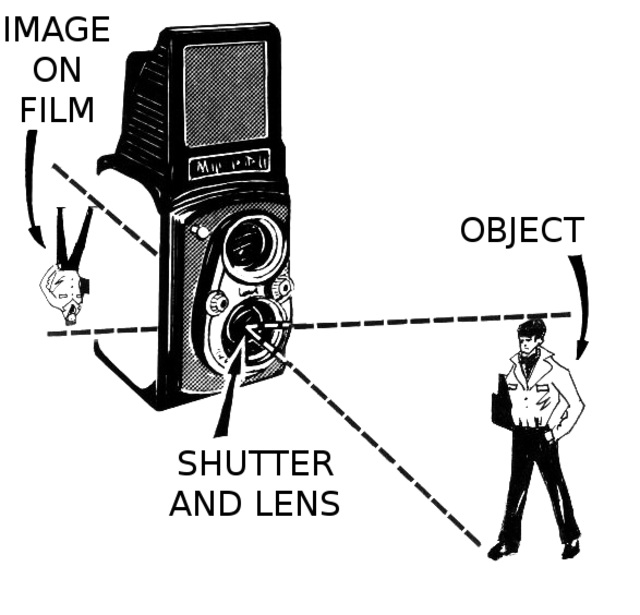
Image: Creative Commons
Why would modern-day photographers ditch their sophisticated smart and expensive SLR cameras in preference for a humble tin with only a hole for a lens?
The magical pinhole is used by photographers today for its unique technical abilities and for experimentation.
Choosing to use the pinhole’s unassuming discreet hole instead of an elaborate complex lens capable of focusing on the furthest moon crater.
A camera with a focal plane shutter can capture snippets of time down to a 1/4000th second – something that a tin with a pinhole can’t ever hope to achieve.
Although it might not be capable of achieving lightning-fast shutter speeds, Pinhole Photographers can capture ultra-long exposures from 24 hours to 6 months.
It may be the simplest of cameras but when it comes to capturing long exposures the pinhole is king,
Making it a great choice for any photographers who want to capture the sun moving, star trails, or a scene changing through the seasons.
Pinhole Photographers can capture interesting wide-angle and ultra-wide-angle images that are rectilinear.
This means that unlike wide-angle photos taken with fisheye lenses, the image will not curve along the peripheral.
The pinhole offers the modern-day photographer the experience of exploring the art of photography from a new fresh angle that isn’t reliant on highly sophisticated equipment.
It can also give the photographer the feeling that they are connecting directly with ancient philosophers and great minds who pondered light and optics.
Pinhole Photography With a Digital Camera
We envision a simple tin box when we think of Pinhole Cameras, but you can also use a digital camera as a Pinhole Camera.
It is possible to turn a digital camera into a pinhole version if the digital camera has a removable lens.
Specialized pinhole lenses are available for digital cameras for photographers who want to experiment with the pinhole technique.
You can also do a funky home DIY job on your camera and convert it to a pinhole yourself.
To convert the camera simply remove the camera lens and replace it with a lens cap that has had a pinhole pierced through it, too easy.
So you have options if you prefer to stick with the digital world of photography.
How to Make a Pinhole Camera
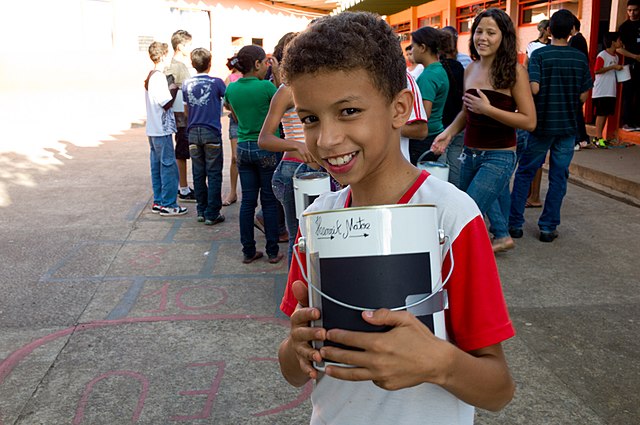
Image: Creative Common
If you like the sound of Pinhole Camera Photography why not give it a go?
The great thing is you don’t have to fork out copious amounts of cash for one, you can simply make one.
Making a camera is not something you would normally dream of attempting with complicated mechanics, cogs, and shutters, where would you start?
In contrast, making a Pinhole Camera is so easy you could pay your five-year-old niece to do it for you.
The materials you need to build this intriguing camera, bar the photographic paper, are items you will find loitering around your home.
The light-tight container could be a box, a ceramic vessel, or even a paint tin, anything that can be light-tight and have a hole pierced in.
No light is permitted into the camera from any crack or vent other than the tiny pinhole, extra light will ruin the effect.
When making pinhole cameras the size of the hole is something to be considered, the smaller the hole the sharper the image will be.
However, if the hole is too small the image will lose sharpness due to diffraction.
The larger the pinhole the further the light-sensitive paper should be from the hole.
If you intend to project onto wall-sized photographic paper then you could theoretically use a room as your light-tight camera.
If you want to capture a miniature pinhole snap you can use a matchbox as the light-tight box.
Decide if you want a curved or flat image plane, where the photographic paper will be placed, and where the image will be projected.
A flat surface will result in an image that has a diffusion of light and thus a vignetting effect will occur.
If you want to avoid the vignetting effect use a curved surface.
Vignetting doesn’t occur on a curved plane as the entire surface will be at an equal distance from the hole.
The most important part of building a pinhole camera is the pinhole itself.
The pinhole is usually made from a thin plate of metal, although don’t use aluminum foil as it is just a little too thin.
The hole is pierced with a pin or drilled for precision, it needs to be clean, and the edge needs to be sharp.
When the hole is created in the plate tape the plate onto the box.
To make a simple shutter tape a flap of cardboard and positioned it to cover the pinhole.
This can be secured into place when moving the camera with an elastic band.
In a darkroom insert and secure the photography paper into place at the back of the box.
When you wish to snap a photo position your camera and remove the shutter, reposition the shutter when you want to finish the exposure.
Experiment with different sizes of chambers, and pinholes to find your optimum style of camera.
And most of all have fun with this liberating minimalistic photography technique.
Excellent (and Inexpensive) Pinhole Cameras You Can Buy
If you are starting to get the pinhole itch and you don’t want to make one, here is a list of some of the best pinhole cameras money can currently buy.
• Lensless Baltic Birch 4 x 5″ Pinhole Camera
The Lensless Baltic Birch is a 4 x 5-inch camera with a 2-inch lens and a 1/64th-inch precision pierced hole.
It has a 50mm focal length and the average exposure in full sunlight is 4 seconds using a 400 ISO film.
The shutter is a small hinged plate that can be swung up a down to take the photo.
The Lensless Baltic Birch is great for those who don’t like fumbling in the dark to load paper as it has been designed to accept a sheet film holder.
Comes in 50mm, 75mm, and 150mm
• Ilford Obscura Pinhole Camera
The Ilford Obscura is a 4 x 5-inch camera with a 26.1 mm lens and a 0.3mm chemical-etched pinhole.
It has an 87mm focal length and comes with a magnetic locking shutter for controlled exposure.
Accepting either sheet film or photographic paper in the rear chamber.
• Scura Tie
The Scura Tie is the more expensive of the three but is also the more sophisticated.
It accepts 35mm film in the back chamber to capture 65 x 35 mm images.
The pinhole plate is laser-drilled for precision and the magnet-powered shutter makes for smooth exposures.
Pinhole Photography Examples and Images
View From Window at La Gras, Joseph Niepce
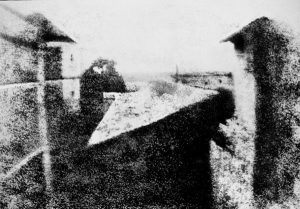
Image: Wikipedia Commons
View from a window at La Gras is the earliest surviving image shot using a pinhole.
Niepce was a lithographer who experimented for 10 years before managing to capture his first photograph.
Stefan Butikofer
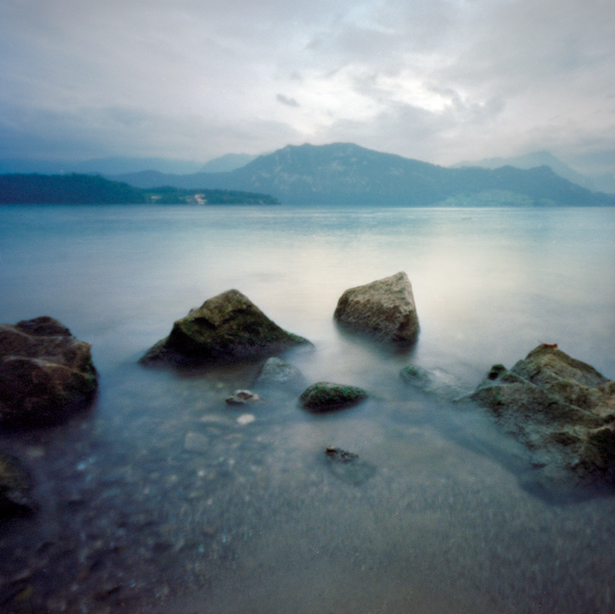
Image: Stefan ButiKofer
A landscape of a lake with distant mountains was shot using a pinhole camera.
The long exposure has resulted in a slight water haze.
FAQs About Pinhole Camera Photography
Are Pinhole Cameras still used?
Yes, the modern-day Camera Obscura is still used by photographers for artistic and technical purposes.
What kind of image is formed by a Pinhole Camera?
The image formed by a Pinhole Camera is real, diminished, and inverted.
This image will also be smaller than the scene it depicts.
Why do some photographers prefer Pinhole Cameras?
Photographers that opt to use Pinhole Cameras over standard cameras can do this for a variety of different reasons.
This could be because they enjoy the simplicity of a camera that offers infinite possibilities.
Or they wish to explore techniques such as infinite depth of field, ultra-wide angles, and long exposures.
What film do you use for a Pinhole Camera?
Any light-sensitive film can be used in a pinhole chamber, but not all will be practical to load and develop.
Ilford multigrade resin-coated paper is a good choice.
Who took the first photograph with a Pinhole Camera?
Joseph Niepce, a French man, took the first preserved photograph “View from a Window La Gras” in 1820 using a Pinhole Camera.
Other people attempted to capture photos using light-sensitive material and Pinhole Chambers, but they didn’t manage to preserve these images.
Who are some photographers that use Pinhole Photography?
There is a long list of interesting photographers who use Pinhole Photography, give it a google and find your favorite.
Some to look out for are Ingrid Budge who started first making gum and salt prints.
Dimosthenis Bitras a Greek photographer, Nuala Mahon a fine art photographer and Spiffy Tumbleweed from Texas.

Check out these 8 essential tools to help you succeed as a professional photographer.
Includes limited-time discounts.





